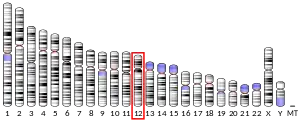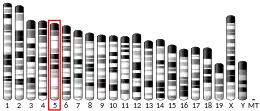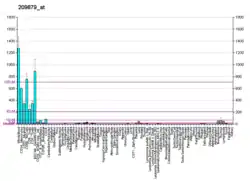| SELPLG | |||||||||||||||||||||||||||||||||||||||||||||||||||
|---|---|---|---|---|---|---|---|---|---|---|---|---|---|---|---|---|---|---|---|---|---|---|---|---|---|---|---|---|---|---|---|---|---|---|---|---|---|---|---|---|---|---|---|---|---|---|---|---|---|---|---|
| |||||||||||||||||||||||||||||||||||||||||||||||||||
| Identifiers | |||||||||||||||||||||||||||||||||||||||||||||||||||
| Aliases | SELPLG, CD162, CLA, PSGL-1, PSGL1, selectin P ligand | ||||||||||||||||||||||||||||||||||||||||||||||||||
| External IDs | OMIM: 600738 MGI: 106689 HomoloGene: 2261 GeneCards: SELPLG | ||||||||||||||||||||||||||||||||||||||||||||||||||
| |||||||||||||||||||||||||||||||||||||||||||||||||||
| |||||||||||||||||||||||||||||||||||||||||||||||||||
| |||||||||||||||||||||||||||||||||||||||||||||||||||
| |||||||||||||||||||||||||||||||||||||||||||||||||||
| |||||||||||||||||||||||||||||||||||||||||||||||||||
| Wikidata | |||||||||||||||||||||||||||||||||||||||||||||||||||
| |||||||||||||||||||||||||||||||||||||||||||||||||||
Selectin P ligand, also known as SELPLG or CD162 (cluster of differentiation 162), is a human gene.
SELPLG codes for PSGL-1, the high affinity counter-receptor for P-selectin on myeloid cells and stimulated T lymphocytes. As such, it plays a critical role in the tethering of these cells to activated platelets or endothelia expressing P-selectin.
The organization of the SELPLG gene closely resembles that of CD43 and the human platelet glycoprotein GpIb-alpha both of which have an intron in the 5-prime-noncoding region, a long second exon containing the complete coding region, and TATA-less promoters.[5]
P-selectin glycoprotein ligand-1 (PSGL-1) is a glycoprotein found on white blood cells and endothelial cells that binds to P-selectin (P stands for platelet), which is one of a family of selectins that includes E-selectin (endothelial) and L-selectin (leukocyte). Selectins are part of the broader family of cell adhesion molecules. PSGL-1 can bind to all three members of the family but binds best (with the highest affinity) to P-selectin.
Posttranslational modification
PSGL-1 protein requires two distinct posttranslational modifications to gain its selectin binding activity:[6][7][8][9]
- sulfation of tyrosines
- the addition of the sialyl Lewis x tetrasaccharide (sLex) to its O-linked glycans
Function
PSGL-1 is expressed on all white blood cells and plays an important role in the recruitment of white blood cells into inflamed tissue: White blood cells normally do not interact with the endothelium of blood vessels. However, inflammation causes the expression of cell adhesion molecules (CAM) such as P-selectin on the surface of the blood vessel wall. White blood cells present in flowing blood can interact with CAM. The first step in this interaction process is carried out by PSGL-1 interacting with P-selectin and/or E-selectin on endothelial cells and adherent platelets. This interaction results in "rolling" of the white blood cell on the endothelial cell surface followed by stable adhesion and transmigration of the white blood cell into the inflamed tissue.
In cancer
In mice it seems to be an immune factor regulating T-cell checkpoints, and it could be a target for future checkpoint inhibitor anti-cancer drugs.[10]
PSGL-1 has been shown to bind to VISTA (V-domain Ig suppressor of T cell activation) but this binding only occurs under acidic pH conditions (pH < 6.5) such as can be found in tumor microenvironments (TME). [11]
In mice, PSGL-1 seems to facilitate T cell exhaustion in tumors.[12]
References
- 1 2 3 GRCh38: Ensembl release 89: ENSG00000110876 - Ensembl, May 2017
- 1 2 3 GRCm38: Ensembl release 89: ENSMUSG00000048163 - Ensembl, May 2017
- ↑ "Human PubMed Reference:". National Center for Biotechnology Information, U.S. National Library of Medicine.
- ↑ "Mouse PubMed Reference:". National Center for Biotechnology Information, U.S. National Library of Medicine.
- ↑ "Entrez Gene: SELPLG selectin P ligand".
- ↑ Li F, Wilkins PP, Crawley S, et al. (1996). "Post-translational modifications of recombinant P-selectin glycoprotein ligand-1 required for binding to P- and E-selectin". J. Biol. Chem. 271 (6): 3255–64. doi:10.1074/jbc.271.6.3255. PMID 8621728.
- ↑ Wilkins PP, Moore KL, McEver RP, Cummings RD (1995). "Tyrosine sulfation of P-selectin glycoprotein ligand-1 is required for high affinity binding to P-selectin". J. Biol. Chem. 270 (39): 22677–80. doi:10.1074/jbc.270.39.22677. PMID 7559387.
- ↑ Sako D, Comess KM, Barone KM, et al. (1995). "A sulfated peptide segment at the amino terminus of PSGL-1 is critical for P-selectin binding". Cell. 83 (2): 323–31. doi:10.1016/0092-8674(95)90173-6. PMID 7585949. S2CID 65420.
- ↑ Pouyani T, Seed B (1995). "PSGL-1 recognition of P-selectin is controlled by a tyrosine sulfation consensus at the PSGL-1 amino terminus". Cell. 83 (2): 333–43. doi:10.1016/0092-8674(95)90174-4. PMID 7585950. S2CID 17480260.
- ↑ Immune Factor Seen to Control T-Cell Checkpoints Involved in Spread of Cancers and Infections. June 2016
- ↑ Nature. 2019 Oct;574(7779):565-570. doi: 10.1038/s41586-019-1674-5. Epub 2019 Oct 23. PMID: 31645726
- ↑ Reviving exhausted T cells to tackle immunotherapy-resistant cancers 2023
Further reading
- Furie B, Furie BC (2004). "Role of platelet P-selectin and microparticle PSGL-1 in thrombus formation". Trends in Molecular Medicine. 10 (4): 171–8. doi:10.1016/j.molmed.2004.02.008. PMID 15059608.
- Sako D, Chang XJ, Barone KM, et al. (1993). "Expression cloning of a functional glycoprotein ligand for P-selectin". Cell. 75 (6): 1179–86. doi:10.1016/0092-8674(93)90327-M. PMID 7505206. S2CID 23786141.
- Moore KL, Eaton SF, Lyons DE, et al. (1994). "The P-selectin glycoprotein ligand from human neutrophils displays sialylated, fucosylated, O-linked poly-N-acetyllactosamine". J. Biol. Chem. 269 (37): 23318–27. doi:10.1016/S0021-9258(17)31656-3. PMID 7521878.
- Veldman GM, Bean KM, Cumming DA, et al. (1995). "Genomic organization and chromosomal localization of the gene encoding human P-selectin glycoprotein ligand". J. Biol. Chem. 270 (27): 16470–5. doi:10.1074/jbc.270.27.16470. PMID 7541799.
- Maruyama K, Sugano S (1994). "Oligo-capping: a simple method to replace the cap structure of eukaryotic mRNAs with oligoribonucleotides". Gene. 138 (1–2): 171–4. doi:10.1016/0378-1119(94)90802-8. PMID 8125298.
- Guyer DA, Moore KL, Lynam EB, et al. (1996). "P-selectin glycoprotein ligand-1 (PSGL-1) is a ligand for L-selectin in neutrophil aggregation". Blood. 88 (7): 2415–21. doi:10.1182/blood.V88.7.2415.bloodjournal8872415. PMID 8839831.
- Goetz DJ, Greif DM, Ding H, et al. (1997). "Isolated P-selectin glycoprotein ligand-1 dynamic adhesion to P- and E-selectin". J. Cell Biol. 137 (2): 509–19. doi:10.1083/jcb.137.2.509. PMC 2139768. PMID 9128259.
- Fuhlbrigge RC, Kieffer JD, Armerding D, Kupper TS (1997). "Cutaneous lymphocyte antigen is a specialized form of PSGL-1 expressed on skin-homing T cells". Nature. 389 (6654): 978–81. Bibcode:1997Natur.389..978F. doi:10.1038/40166. PMID 9353122. S2CID 4376296.
- Suzuki Y, Yoshitomo-Nakagawa K, Maruyama K, et al. (1997). "Construction and characterization of a full length-enriched and a 5'-end-enriched cDNA library". Gene. 200 (1–2): 149–56. doi:10.1016/S0378-1119(97)00411-3. PMID 9373149.
- Snapp KR, Ding H, Atkins K, et al. (1998). "A novel P-selectin glycoprotein ligand-1 monoclonal antibody recognizes an epitope within the tyrosine sulfate motif of human PSGL-1 and blocks recognition of both P- and L-selectin". Blood. 91 (1): 154–64. doi:10.1182/blood.V91.1.154. PMID 9414280.
- Bennett EP, Hassan H, Mandel U, et al. (1998). "Cloning of a human UDP-N-acetyl-alpha-D-Galactosamine:polypeptide N-acetylgalactosaminyltransferase that complements other GalNAc-transferases in complete O-glycosylation of the MUC1 tandem repeat". J. Biol. Chem. 273 (46): 30472–81. doi:10.1074/jbc.273.46.30472. hdl:2066/216411. PMID 9804815.
- Wimazal F, Ghannadan M, Müller MR, et al. (2000). "Expression of homing receptors and related molecules on human mast cells and basophils: a comparative analysis using multi-color flow cytometry and toluidine blue/immunofluorescence staining techniques". Tissue Antigens. 54 (5): 499–507. doi:10.1034/j.1399-0039.1999.540507.x. PMID 10599889.
- Epperson TK, Patel KD, McEver RP, Cummings RD (2000). "Noncovalent association of P-selectin glycoprotein ligand-1 and minimal determinants for binding to P-selectin". J. Biol. Chem. 275 (11): 7839–53. doi:10.1074/jbc.275.11.7839. PMID 10713099.
- André P, Spertini O, Guia S, et al. (2000). "Modification of P-selectin glycoprotein ligand-1 with a natural killer cell-restricted sulfated lactosamine creates an alternate ligand for L-selectin". Proc. Natl. Acad. Sci. U.S.A. 97 (7): 3400–5. doi:10.1073/pnas.040569797. PMC 16251. PMID 10725346.
- Frenette PS, Denis CV, Weiss L, et al. (2000). "P-Selectin glycoprotein ligand 1 (PSGL-1) is expressed on platelets and can mediate platelet-endothelial interactions in vivo". J. Exp. Med. 191 (8): 1413–22. doi:10.1084/jem.191.8.1413. PMC 2193129. PMID 10770806.
- Woltmann G, McNulty CA, Dewson G, et al. (2000). "Interleukin-13 induces PSGL-1/P-selectin-dependent adhesion of eosinophils, but not neutrophils, to human umbilical vein endothelial cells under flow". Blood. 95 (10): 3146–52. doi:10.1182/blood.V95.10.3146. PMID 10807781.
- Tsuchihashi S, Fondevila C, Shaw GD, et al. (2006). "Molecular characterization of rat leukocyte P-selectin glycoprotein ligand-1 and effect of its blockade: protection from ischemia-reperfusion injury in liver transplantation". J Immunol. 176 (1): 616–24. doi:10.4049/jimmunol.176.1.616. PMID 16365457.
External links
- P-selectin+glycoprotein+ligand-1 at the U.S. National Library of Medicine Medical Subject Headings (MeSH)
This article incorporates text from the United States National Library of Medicine, which is in the public domain.





